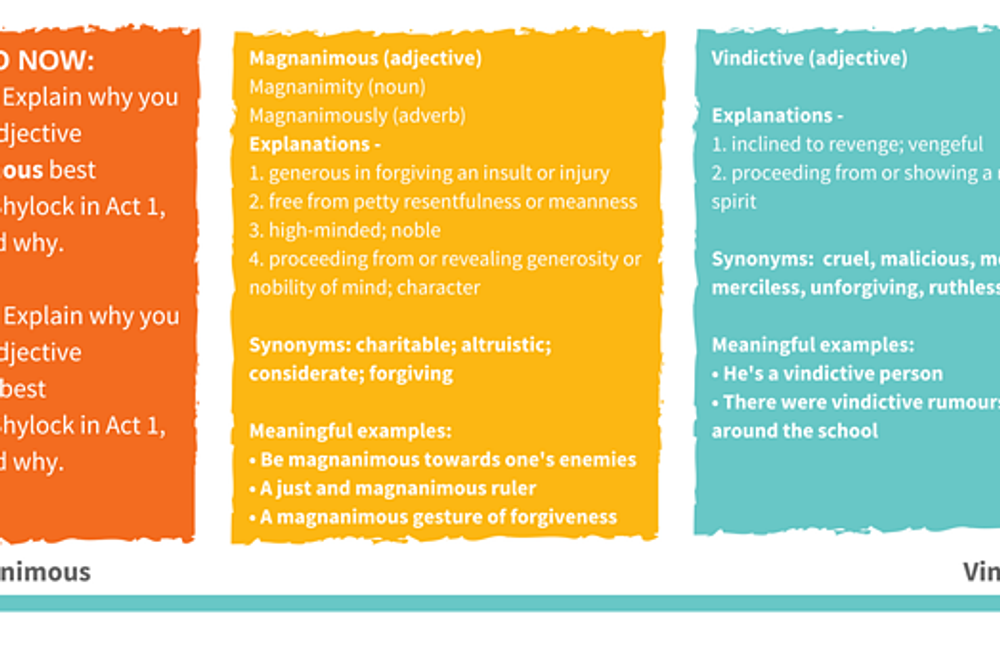These, along with many others, were the bombardment of questions that came flying towards me as my Year 8 students ambled into my classroom one afternoon in November.
On the interactive whiteboard, the ‘Do Now’ activity asked them to place synonyms for the words ‘light-hearted’ and ‘serious’ on a spectrum. I asked those who needed help to use a dictionary to find out the meanings, before asking for my help.
When I asked for feedback, some learners were able to justify their responses, showing an understanding of the words. However, many found it difficult to explain the meanings of this academic vocabulary, even though they had written the definitions down and had placed the words on the spectrum. Some endeavoured to articulate their understanding of the adjectives, but were unable to use them accurately in context.

I felt like a failure.
So I set myself a challenge: by the end of the term, I wanted to have at least one strategy that I could use to enable learners to understand and use ambitious academic vocabulary in their writing. This challenge also became the key focus of my Action Research. And so, through my research, I discovered Beck et al’s ‘Bringing Words to Life’, and Alex Quigley’s online blog which explored how to teach vocabulary to ‘word-poor’ students.
Beck et al suggest different ways of bringing words to life. One way is to ensure learners have access to student-friendly explanations of the word, as opposed to the dictionary definitions. Another is to ensure learners have meaningful examples, so that they can see the word being used in different settings. Most importantly, I think, is to ensure learners are able to use academic vocabulary in different contexts.
I found the ideas and strategies so easy to apply; I wished I had discovered them sooner.
Strategies for engaging students in academic vocabulary
Following this structure, I excitedly began to apply the research with my year 8 students. Below is an example of a ‘Do Now’ activity from a lesson on Shylock in ‘The Merchant of Venice.’ Using Beck et al’s method of ‘Bringing Words to Life’, I provided students with a print out of the simplified meanings with synonyms and examples.

I directed them to discuss whether they thought Shylock was ‘magnanimous’ or ‘vindictive’ and why, using evidence from the text. They were encouraged and reminded to use the words when giving feedback to the whole class.
Thereafter, I asked them to write a paragraph justifying their interpretations, with limited intervention from me. My excitable Year 8s sat in absolute silence and wrote. They used the academic vocabulary correctly in context and, I noticed, with far more ease than previously.
In order to see whether they had retained the knowledge, later that week, I set them a mini quiz: learners had to spell the key words accurately, explain the meanings and use them in sentences. This activity was highly successful as the majority of learners showcased a deeper understanding of the words. I was so incredibly impressed by the progress they were making and how excited they now were to complete these tasks.
So now, instead of asking, "what does that even mean, Madam?" they ask: "what academic vocabulary will we learn today, Madam?"




